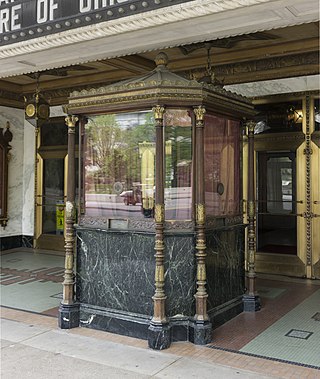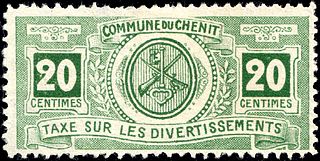Related Research Articles

The oldest known surviving film was shot in the United Kingdom as well as early colour films. While film production reached an all-time high in 1936, the "golden age" of British cinema is usually thought to have occurred in the 1940s, during which the directors David Lean, Michael Powell, and Carol Reed produced their most critically acclaimed works. Many British actors have accrued critical success and worldwide recognition, such as Audrey Hepburn, Olivia de Havilland, Vivien Leigh, Glynis Johns, Maggie Smith, Laurence Olivier, Michael Caine, Sean Connery, Ian Mckellen, Joan Collins, Judi Dench, Julie Andrews, Daniel Day-Lewis, Gary Oldman, Emma Thompson, Anthony Hopkins and Kate Winslet. Some of the films with the largest ever box office returns have been made in the United Kingdom, including the fourth and fifth highest-grossing film franchises.
Taxes and subsidies change the price of goods and, as a result, the quantity consumed. There is a difference between an ad valorem tax and a specific tax or subsidy in the way it is applied to the price of the good. In the end levying a tax moves the market to a new equilibrium where the price of a good paid by buyers increases and the proportion of the price received by sellers decreases. The incidence of a tax does not depend on whether the buyers or sellers are taxed since taxes levied on sellers are likely to be met by raising the price charged to buyers. Most of the burden of a tax falls on the less elastic side of the market because of a lower ability to respond to the tax by changing the quantity sold or bought. Introduction of a subsidy, on the other hand, may either lowers the price of production which encourages firms to produce more, or lowers the price paid by buyers, encouraging higher sales volume. Such a policy is beneficial both to sellers and buyers.
A subsidy or government incentive is a type of government expenditure for individuals and households, as well as businesses with the aim of stabilizing the economy. It ensures that individuals and households are viable by having access to essential goods and services while giving businesses the opportunity to stay afloat and/or competitive. Subsidies not only promote long term economic stability but also help governments to respond to economic shocks during a recession or in response to unforeseen shocks, such as the COVID-19 pandemic.
The National Film and Television School (NFTS) is a film, television and games school established in 1971 and based at Beaconsfield Studios in Beaconsfield, Buckinghamshire, England. It is featured in the 2021 ranking by The Hollywood Reporter of the top 15 international film schools.
The film industry or motion picture industry comprises the technological and commercial institutions of filmmaking, i.e., film production companies, film studios, cinematography, animation, film production, screenwriting, pre-production, post-production, film festivals, distribution, and actors. Though the expense involved in making films almost immediately led film production to concentrate under the auspices of standing production companies, advances in affordable filmmaking equipment, as well as an expansion of opportunities to acquire investment capital from outside the film industry itself, have allowed independent film production to evolve.

A box office or ticket office is a place where tickets are sold to the public for admission to an event. Patrons may perform the transaction at a countertop, through a hole in a wall or window, or at a wicket. By extension, the term is frequently used, especially in the context of the film industry, as a metonym for the amount of business a particular production, such as a film or theatre show, receives. The term is also used to refer to a ticket office at an arena or a stadium.
The UK Film Council (UKFC) was a non-departmental public body set up in 2000 to develop and promote the film industry in the UK. It was constituted as a private company limited by guarantee, owned by the Secretary of State for Culture, Media and Sport, and governed by a board of 15 directors. It was funded from various sources including The National Lottery. John Woodward was the Chief Executive Officer of the UKFC.
The Children's Film Foundation (CFF) is a non-profit organisation which makes films and other media for children in the United Kingdom. Originally it made films to be shown as part of children's Saturday morning matinée cinema programming. The films typically were about 55 minutes long. Over time the organisation's role broadened and its name changed, first to the Children's Film and Television Foundation in the mid-80s and to the Children's Media Foundation in 2012.

Entertainment tax also sometimes referred to as "amusement tax" is any tax levied on any form of commercial entertainment, such as movie tickets, exhibitions, sport events and more. The specific rules such as the tax rate of entertainment tax and cases of tax exemption are subject to local authorities, as is their collection. The entertainment tax has in the most cases the form of indirect tax, which is levied on buyer. Nowadays, the most discussed subject of those taxes are their implementations to online services, especially the ones working on streaming basis such as Netflix, Spotify and others.
Film finance is an aspect of film production that occurs during the development stage prior to pre-production, and is concerned with determining the potential value of a proposed film.
AHDB Potatoes, previously known as the Potato Council, is a trade organisation that aims to develop and promote the potato industry in Great Britain. Previously an independent non-departmental public body, it has been a division of the Agriculture and Horticulture Development Board since 1 April 2008.

A co-production is a joint venture between two or more different production companies for the purpose of film production, television production, video game development, and so on. In the case of an international co-production, production companies from different countries are working together.
Runaway production is a term used by the American Hollywood industry to describe filmmaking and television productions that are intended for initial release/exhibition or television broadcast in the U.S., but are actually filmed outside of the immediate Los Angeles area, whether in another country, another U.S. state, or in another part of California.

Tamil cinema, also known as Kollywood, is the segment of Indian cinema dedicated to the production of motion pictures in the Tamil language, the main spoken language in the state of Tamil Nadu. It is nicknamed Kollywood, a portmanteau of the names Kodambakkam, a neighbourhood in Chennai, and Hollywood. The first Tamil silent film, Keechaka Vadham, was directed by R. Nataraja Mudaliar in 1918. The first Tamil talking feature film, Kalidas, a multilingual directed by H. M. Reddy was released on 31 October 1931, less than seven months after India's first talking motion picture Alam Ara.
Warwick Films was a film company founded by film producers Irving Allen and Albert R. Broccoli in London in 1951. The name was taken from the Warwick Hotel in New York where Broccoli and his wife were staying at the time of the final negotiations for the company's creation. Their films were released by Columbia Pictures.
The National Film Finance Corporation (NFFC) was a film funding agency in the United Kingdom in operation from 1949 until 1985. The NFFC was established by the Cinematograph Film Production Act 1949, and further enhanced by the Cinematograph Film Production Act 1952, which gave the NFFC the power to borrow from sources other than the Board of Trade. The NFFC was abolished by the Films Act 1985.
Sir Crawfurd Wilfred Griffin Eady was a British civil servant and diplomat.

Coconut production plays an important role in the national economy of the Philippines. According to figures published in December 2009 by the Food and Agriculture Organization of the United Nations, the Philippines is the world's second largest producer of coconuts, producing 19,500,000 tonnes in 2009. Production in the Philippines is generally concentrated in medium-sized farms.

The Films Act 1980 is an act of the Parliament of the United Kingdom. The act allowed the National Film Finance Corporation to exercise its powers in relation to financing the production of films for an extended period, gave further funding to the Corporation and amended the laws around the quotas of British films.
References
Sources
- Fenwick, James (2017). "The Eady Levy,'The Envy of Most Other European Nations': Runaway Productions and the British Film Fund in the early 1960s.". In Hunter, I.Q.; Porter, Laraine; Smith, Justin (eds.). The Routledge Companion to British Cinema History. pp. 191–199. ISBN 9781315392172.
- Magor, Maggie; Schlesinger, Philip (Autumn 2009). "'For this relief much thanks.' Taxation, film policy and the UK government". Screen. 50 (3): 299–307: 302–303. doi:10.1093/screen/hjp017 – via Internet Archive.
- Oakley, Charles Allen (2013) [1964]. Where we Came In: Seventy Years of the British Film Industry. Routledge. pp. 27, 29, 197-. ISBN 9781317928676 . Retrieved 27 July 2019.
- Romer, Stephen (1993). The decline of the British film industry: an analysis of market structure, the firm and product competition (PDF) (PhD). Brunel University. pp. 77–86. Retrieved 27 July 2019.
- Stubbs, Jonathan (May 2009). "The Eady Levy: A Runaway Bribe? Hollywood Production and British Subsidy in the Early 1960s" . Journal of British Cinema and Television. 6 (1): 1–20. doi:10.3366/E174345210900065X . Retrieved 27 July 2019.
Citations
- 1 2 3 4 "British Pix Industry Given 1 Month To Decide on Voluntary Eady Plan". Variety . 23 September 1953. p. 14. Retrieved 13 October 2019– via Archive.org.
- ↑ Mirisch, Walter (27 February 2008). I Thought We Were Making Movies, Not History. University of Wisconsin Press. p. 202. ISBN 978-0-299-22640-4.
- ↑ Romer 1993 Table 12(a)
- ↑ Department of Trade and Industry (19 July 1984). Film policy. Command papers. Vol. Cmnd.9319. H.M.S.O. ISBN 9780101931908. OCLC 11661469.
- ↑ "UK cinema admissions 1935 to date". Launching Films. Film Distributors' Association Ltd. Retrieved 31 January 2018.
- ↑ "UK media laws: Cinema and films Films Act 1985". TerraMedia. Retrieved 2 September 2019.